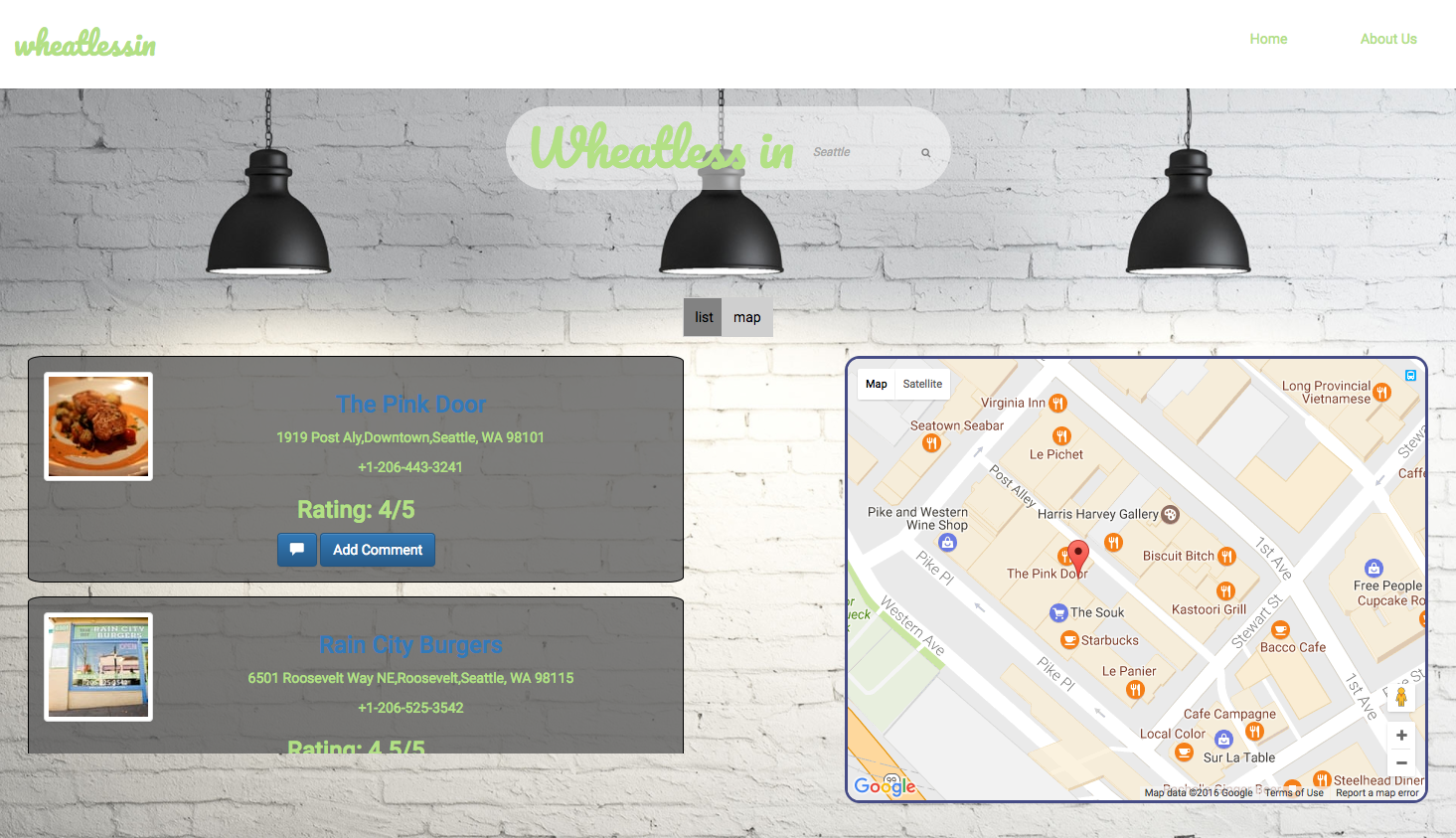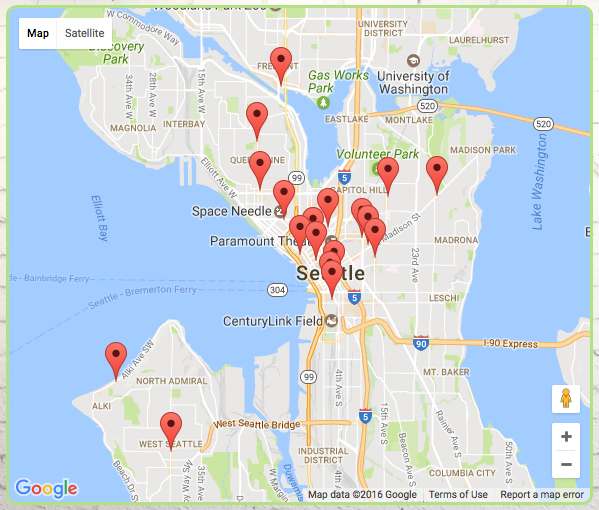They spend three weeks in an intense learn, code, repeat mode, and finish the month-long class in project week. During this development sprint, they devote all their time (and I mean all—students invest anywhere from 50 to 70+ hours on campus during project week) building an app with a team of two to four classmates.
One team shared some behind-the-scenes info on their class project, an app that suggests gluten-free eateries around the city. Students brainstorm project ideas in the days leading up to project week, and 301 student Michael Paik’s passionate pitch for a food-allergy-friendly restaurant app intrigued his classmates.
“[Michael] said he had a hard time finding gluten-free establishments—he wanted to build something to help gluten-free people and their friends find places to eat at,” said Conor Clary, who also worked on the project. Their teammate, Joey Derosa, added that “hearing Michael’s pitch and seeing how passionate he was about it made it an easy choice.”

It’s clear why Michael’s been brainstorming the concept behind Wheatlessin for a while. People with gluten allergies have to either spend extra time trying to find suitable food options, or take their chances and risk getting sick after eating out. The lack of a fast, reliable, data-driven resource in this area was one of the factors that drove Michael to learn to code in the first place.
“Many of those suffering from an awful gluten-allergy (including myself) are struggling to find trustworthy information swiftly on the web,” Michael said. “There is a lot of distracting and confusing noise on Yelp and other similar sites that often produce irrelevant data to those who have medical reasons to avoid gluten. Our user story is to fill this gap and provide a site that not only added another layer of data vetting but to also build a community of similar dietary needs and guide each other through their experience.”
Michael, Conor, Joey, and Chaimae Bettah, the fourth member of their team, got a minimum viable product (MVP) up and running in just two days. They spent the other two adding features, fixing bugs, and putting the final touches on their app before the last day of the class, when each team gives a presentation and live demo of their app.
The web app is built with Firebase and a Google API (along with other development tools), simultaneously the biggest challenges and most rewarding parts of the project.
“Having to learn and implement a database—a skill we did not learn in [this] class—with poor documentation in two days was a challenge.” Joey shared.

“I could really see having a lot of fun with [the Google Maps API] in the future,” Conor said. “There’s so much you can do with it, and we didn’t even scratch the surface.”
Of course, one of the biggest challenges for every team is time—there are no extensions and no pushed due dates. Projects have to be ready to present on Friday. Teams tend to continue to work on their projects after finishing the class, since there are often more features they’d like to add.
Michael definitely has big plans for Wheatlessin. “We plan to refactor the MVP to make this visually even more appealing so that it appeals to a wider user base. There are definitely plans for better versions to come!”
While they intend to come back to Wheatlessin, each team member is focusing on more a present challenge: Code 401, our most advanced level of programming courses. Conor and Joey both decided to study Python programming and the world of back-end development. Michael chose to dive deeper into JavaScript and go the full-stack route, working with both front-end and back-end technologies.
Well done to every developer who contributed to Wheatlessin!
Want to find out what you can build with an education in coding? Join us at an upcoming Code 101 workshop to explore a career in tech.

